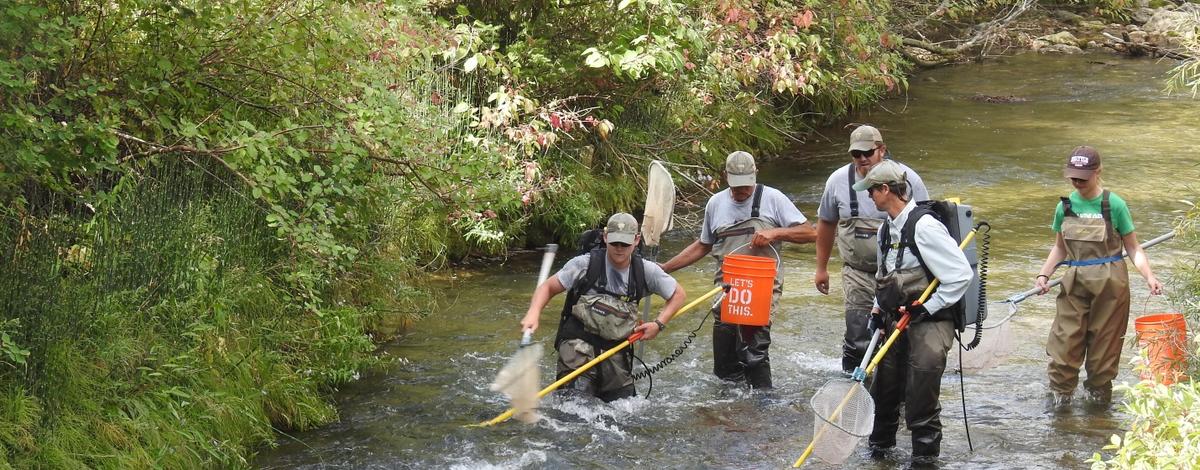In the Panhandle Region and throughout the state, fisheries biologists are gearing up to learn more about the fish in area lakes and streams. The Idaho Fish and Game monitors fish populations around the state all year long, but spring and summer are a particularly busy time. Biologists sample fish populations to answer questions about how many fish are present, if they are trending up or down, the types of fish in a water body, how fish grow, and at what rate fish die. All of this information is useful in describing how good fishing is and what actions might are needed to make fishing better.
There are lots of ways to collect information about fish and, just like an auto mechanic, biologists have different tools for different needs. Catching fish is one of the main tasks associated with monitoring a fish population, but not all fish can be effectively caught the same way. Fish size, shape, and habits all influence what tools are needed to catch a fish at the necessary scale to answer questions. Additionally, sampling methods that minimize mortality are used when possible.
Bass or panfish often are found in shallow water and are generally best sampled by electrofishing. Specially designed boats equipped with the ability to transmit electricity through the water safely are used to temporarily stun or “shock” fish that can then be netted and placed in a live well to recover. Because bass and panfish are short and wide-shaped, they are not as easily sampled with nets.
In contrast, more elongated fish like trout that live in the open water areas of a lake are more typically sampled with gill nets. Gill nets come in many sizes and can be tailored to catch many different size fish or to target a smaller range of sizes.
Other tools and techniques allow biologists to count fish without ever touching them. Hydroacoustic gear is like a fancy fish finder and commonly used to monitor species like kokanee. When combined with high-tech software, biologists can run hydroacoustic gear around a lake to estimate fish abundance.
In small streams or rivers, trained biologists sometimes count fish while snorkeling. Although “hands-off” approaches work in some situations, they don't in others. For example, when fish growth rates are of interest, handling fish is necessary to gather information on fish size and age.
Gathering specific information on fish can require a portion of the catch be sacrificed. For example, inner ear bones (referred to as otoliths) are commonly used to estimate how old a fish is, but requires dissection of the fish to remove them. Biologists always balance the number of fish sacrificed with the value of the information collected to insure monitoring efforts do not hurt fish populations. Fortunately, good monitoring information can be collected by sampling a very small percentage of the fish in a given population.
Monitoring fish populations is important for maintaining healthy fish populations and good fishing opportunities. Fisheries monitoring projects don’t only help biologists provide good fishing opportunities, but may also be useful to anglers looking for information on their favorite fishery. Reports on fisheries monitoring activities from throughout the state can be found at:
https://collaboration.idfg.idaho.gov/FisheriesTechnicalReports/.

